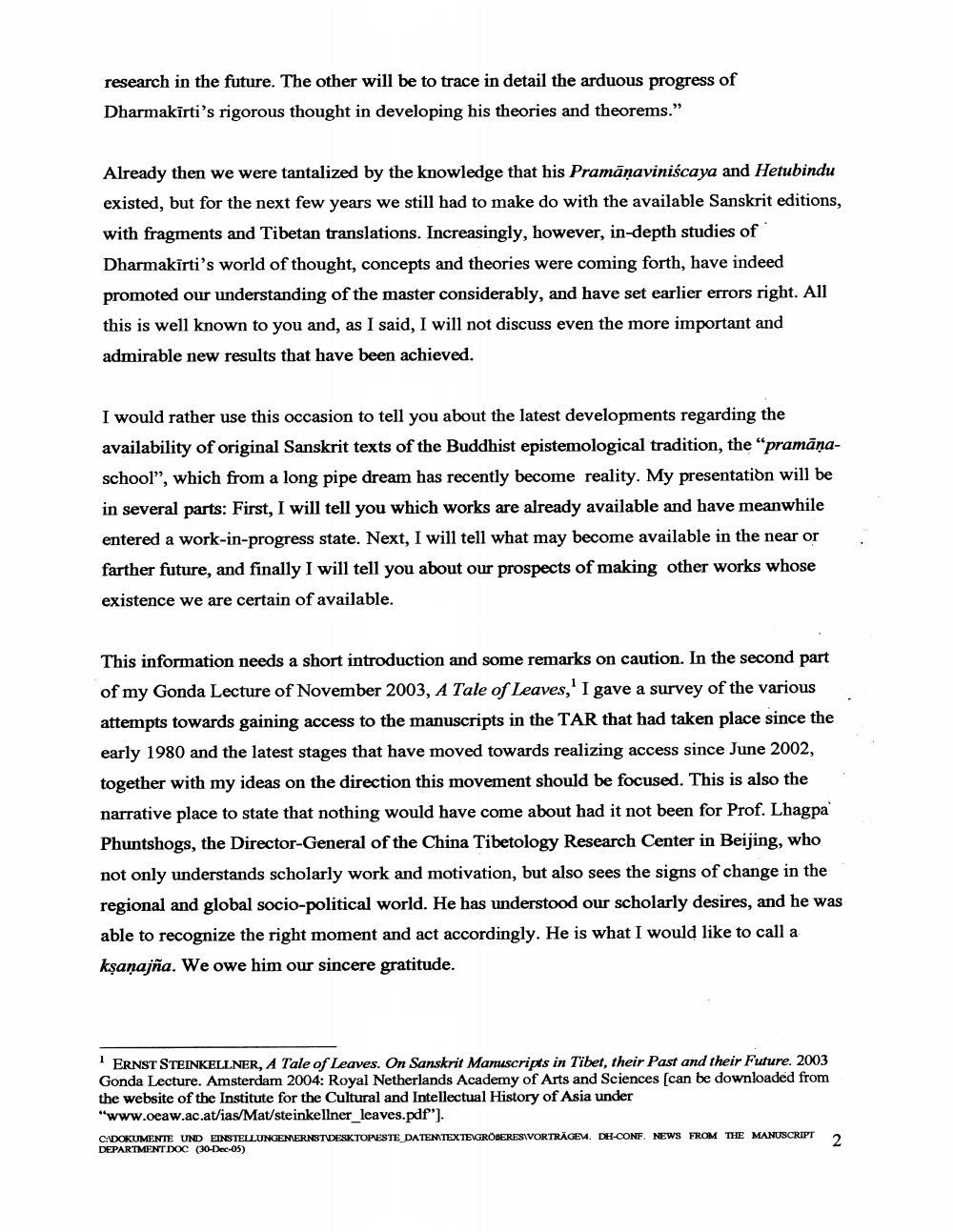________________
research in the future. The other will be to trace in detail the arduous progress of Dharmakīrti's rigorous thought in developing his theories and theorems."
Already then we were tantalized by the knowledge that his Pramāņaviniscaya and Hetubindu existed, but for the next few years we still had to make do with the available Sanskrit editions, with fragments and Tibetan translations. Increasingly, however, in-depth studies of Dharmakīrti's world of thought, concepts and theories were coming forth, have indeed promoted our understanding of the master considerably, and have set earlier errors right. All this is well known to you and, as I said, I will not discuss even the more important and admirable new results that have been achieved.
I would rather use this occasion to tell you about the latest developments regarding the availability of original Sanskrit texts of the Buddhist epistemological tradition, the “pramāņaschool", which from a long pipe dream has recently become reality. My presentation will be in several parts: First, I will tell you which works are already available and have meanwhile entered a work-in-progress state. Next, I will tell what may become available in the near or farther future, and finally I will tell you about our prospects of making other works whose existence we are certain of available.
This information needs a short introduction and some remarks on caution. In the second part of my Gonda Lecture of November 2003, A Tale of Leaves,' I gave a survey of the various attempts towards gaining access to the manuscripts in the TAR that had taken place since the early 1980 and the latest stages that have moved towards realizing access since June 2002, together with my ideas on the direction this movement should be focused. This is also the narrative place to state that nothing would have come about had it not been for Prof. Lhagpa Phuntshogs, the Director-General of the China Tibetology Research Center in Beijing, who not only understands scholarly work and motivation, but also sees the signs of change in the regional and global socio-political world. He has understood our scholarly desires, and he was able to recognize the right moment and act accordingly. He is what I would like to call a kşanajña. We owe him our sincere gratitude.
ERNST STEINKELLNER, A Tale of Leaves. On Sanskrit Manuscripts in Tibet, their Past and their Future. 2003 Gonda Lecture. Amsterdam 2004: Royal Netherlands Academy of Arts and Sciences (can be downloaded from the website of the Institute for the Cultural and Intellectual History of Asia under "www.oeaw.ac.at/ias/Mat/steinkellner_leaves.pdf"). C:\DOKUMENTE UND EINSTELLUNGEN ERNST DESKTOPESTE DATENIEXTEGROBERESIVORTRÄGEM. DH-CONF. NEWS FROM THE MANUSCRIPT DEPARTMENT DOC (30-Dec-05)




